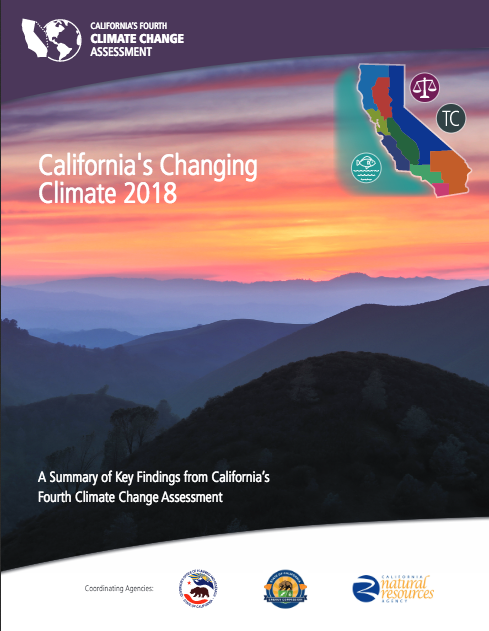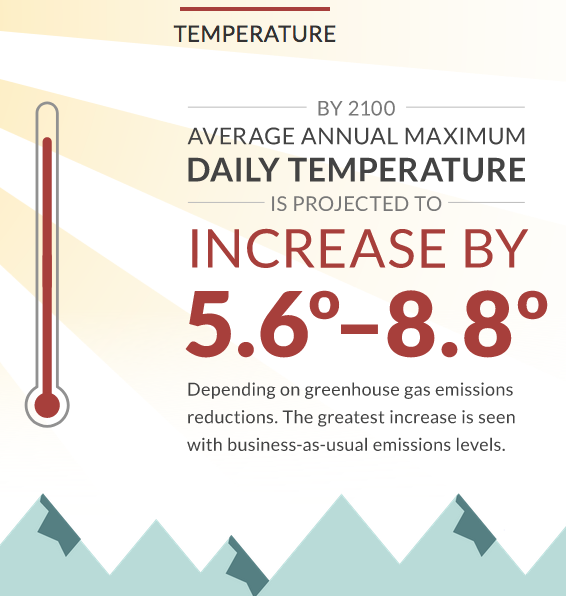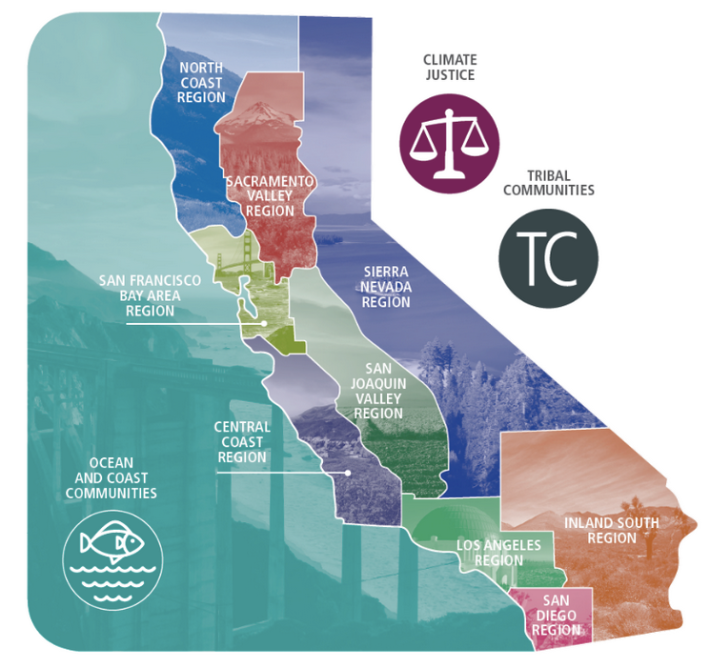Note: GJEL Accident Attorneys regularly sponsors coverage on Streetsblog San Francisco and Streetsblog California. Unless noted in the story, GJEL Accident Attorneys is not consulted for the content or editorial direction of the sponsored content.
California's Fourth Climate Change Assessment was recently released by the Office of Planning and Research, the Natural Resources Agency, and the state Energy Commission. It updates and expands on earlier work—the third assessment was released in 2012—and provides a dour overview of what the future holds for Californians.
This fourth assessment includes information about new data tracking systems and analysis, funded by both state agencies and outside groups, on temperature, storm modeling, and adaptation strategies. New data systems track factors such as relative humidity, wind speed, drought, heat waves, heavy rain, and sea level rise, which provides a wealth of new information to inform climate policies. The technical reports underpinning this information are also available on the report's site.
The information is a powerful argument for quick action on the part of policy makers and legislators in a wide range of policy areas. Governor Jerry Brown responded to the release on Twitter, writing, “In California, facts and science still matter. These findings are profoundly serious and will continue to guide us as we confront the apocalyptic threat of irreversible climate change.”
Brown has called climate change an “existential threat” and nothing in this report belies that assessment.
A summary report describes the scientific consensus on climate change impacts in California generally, and separate regional reports detail specific effects in nine regions of the state.
It describes very high confidence levels—general consensus among scientific researchers—that average temperatures in the state will continue to rise, sea levels will go up, and snowpack will shrink, affecting the availability of water for all uses.
The report describes a “medium high confidence level” that the state will see increases in heavy rain events, flooding risk, drought, and the extent of wildfires. Not all scientific research agrees on the degree or direction of trends in these factors, but they do show increasing variability in, for example, the amount of rain. However, write the authors,
Across all the simulations, higher temperatures lead to dryer conditions because of increasing evaporation and plant stress. With increased numbers of dry days, several of the models indicated an increased occurrence of dry years and strings of dry years resulting in more frequent and more intense droughts. At the same time that most of the simulations had more dry days, there was also a tendency for increased precipitation on very wet days, so that the risk of floods caused by large storms will increase, sometimes occurring in bursts over several weeks.
This is not just the future: California is already experiencing all of these changes.
These assessments also compare what might happen under a scenario in which greenhouse gases are reduced “at a moderate rate” vs. continuing at current rates. The effects do vary, but either way average temperatures will rise over time, says the report, with the number of extreme heat days also increasing exponentially. Also, if greenhouse gas emissions are reduced, sea level will still rise, but will do so more slowly than if emission rates stay the same.
The assessment includes several statewide reports, including on climate justice, tribal and indigenous communities, and the ocean and coastal areas. The nine regional reports cover the Central Coast, inland deserts, Los Angeles, North Coast, Sacramento Valley, San Diego, San Francisco Bay Area, San Joaquin Valley, Sierra Nevada.
All of these reports discuss specific impacts to these areas as well as work that is already being done there, and work that needs to be done both to reduce greenhouse gas emissions and to adapt to the coming changes.
The reports address the impacts of climate change on public health: increased mortality in extreme heat events; increased respiratory illness from wildfire smoke and low air quality; displacement from fires, drought, and flood events; the rise of Zika and other mosquito-born illnesses in warm temperatures; increased stress and trauma from dealing with all of this.
In addition, there's the irony of increasing demand for air conditioning further driving up greenhouse gas emissions, a problem that can partially be addressed by making sure electricity sources are clean and renewable, but also requires a better look at how air conditioning systems work as well as how buildings use them.
Impacts on infrastructure and land include vulnerable energy supplies and delivery networks and huge economic costs from flood risk to land subsidence to beach erosion to loss of agricultural lands.
The assessment includes a report addressing climate justice. Communities that tend to suffer most from all of these impacts also tend to be the poorest and least able to adapt because of a lack of resources and support. This section addresses what has been measured, what needs to be measured, the importance of community involvement, and combating displacement.
A separate report addresses effects on tribal and indigenous communities, and discusses the importance of Traditional Ecological Knowledge (TEK)-based methods of adaptation and resilience:
The importance of maintaining TEK is not isolated to environmental and ecological improvements. These ancient traditional practices are closely linked to climate resilience across tribal cultural health, identity, and continuity. Cultural practices and traditional land management are also linked to improving physical and mental health among tribal members.
All of the reports include discussions of work that is already being done, in communities and at the policy level, in the legislature and among advocacy groups. The Climate Justice section, for example, includes Climate Justice Principles as well as policy and funding recommendations for all state agencies—although these haven't been adopted across the board. Regional reports list ongoing planning and research efforts such as local Climate Action Plans, sea level vulnerability studies, and adaptation planning.
In its discussion of impacts on water infrastructure, for example, the report highlights ways that local water districts were able to prepare for drought—and suggests that some of the smaller water systems could use state help—funding and technical assistance--to plan better.
Of course California isn't in this climate change situation by itself--and can't change the global trends alone. But actions taken in California, and continued assessments of the effects of those actions, can help inform efforts in other places. And this Fourth Climate Assessment adds new information and tools for planners and policy makers at all levels.
One group that is already applying the information is the Climate-Safe Infrastructure Working Group, which was created by A.B. 2800 from Assemblymember Bill Quirk (D-Hayward), signed in 2016. That bill requires state agencies to take into account the current and future impacts of climate change when planning, designing, building, operating, maintaining, and investing in state infrastructure. The working group that resulted from the bill met throughout the year and will release its recommendations on strengthening the state's infrastructure next week.








